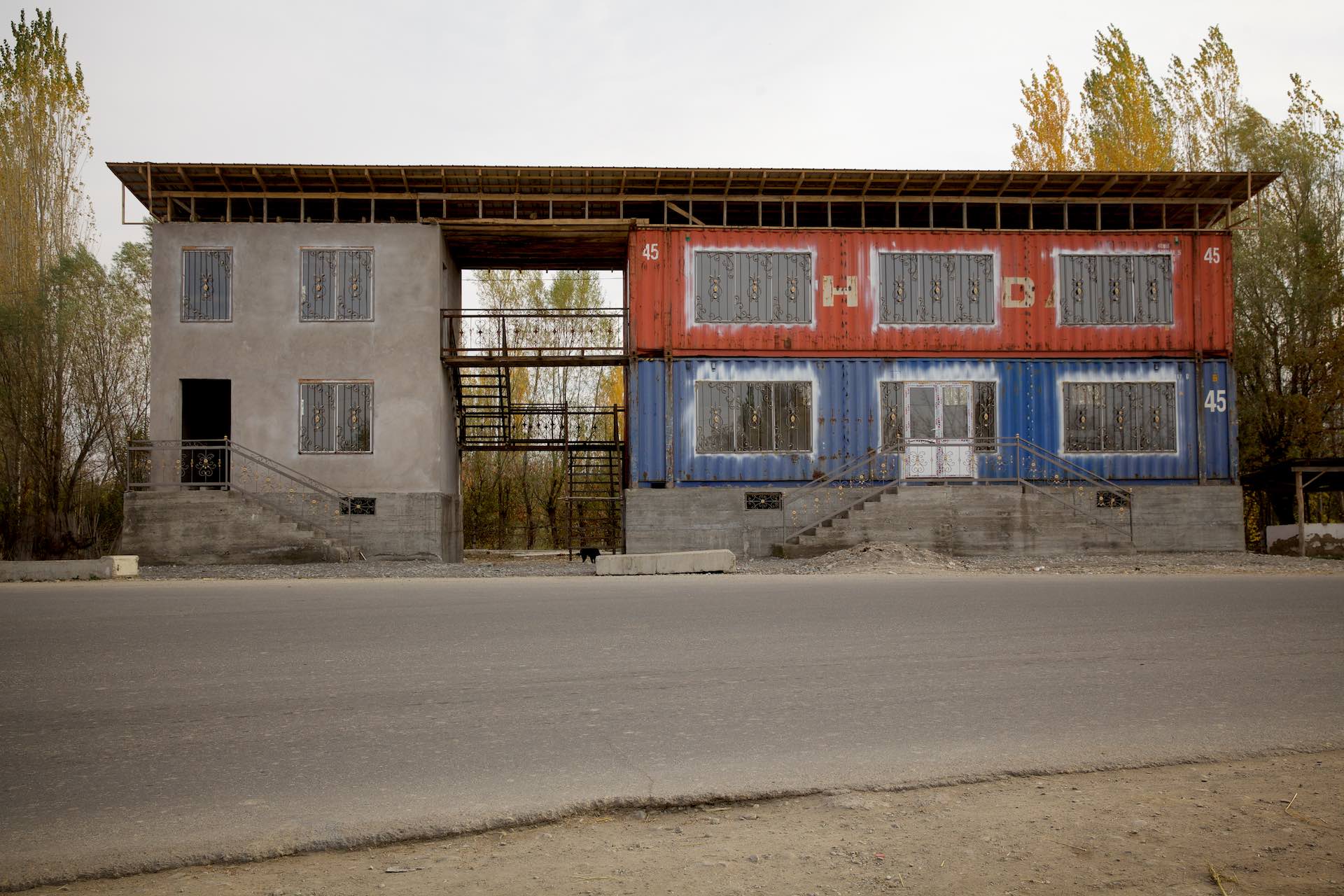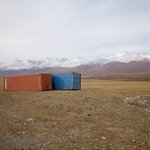Shipped
Standardised 40 ft shipping containers are everywhere in Kyrgyzstan. Goods from China and elsewhere are increasingly imported in such containers and, as there is little Kyrgyzstan would export to China, they are usually sold on spot rather than transported back. In 2013, the price of an empty shipping container in Bishkek was around USD 1,200. In 2014, however, prices tumbled. In anticipation of increasing customs fees related to Kyrgyzstan's planned accession to the Russian-led Eurasian Economic Union, traders began to stock supplies for the future. The resulting additional supply of empty containers made them even cheaper.
Originally, empty containers were used as sales outlets in bazaars, as small offices, or as road side eateries. But over time they started serving an increasing variety of purposes. In autumn 2014 I have seen entire multi-storey houses that were being built around empty shipping containers. And, I really wonder what plan those two in the middle of nowhere serve.
The containers are not only a stubborn material testimony to the trade imbalances between Central Asia and China; they also embody the pervasive logics and logistics of global high-volume commodity trade, which is pushing aside most other forms exchange. Compare the containers, for example, to the material sediments that accumulate in Himalayan villages where no road has reached yet.
Privacy Policy
Plain and simple: I take the principle of minimal data collection serious and try hard not to collect or process any personal data beyond the basics required to serve and maintain the website.
Specifically,
- We do not use cookies.
- We do not use third party analytics.
- There is no contact form that would allow you to enter personal data.
- We do not use advertising to run this website.
In order to serve this website, your IP address and information about your browser, operating system and screen resolution need to be collected and processed. theotherimage.com is a simple, handcrafted, static website hosted by Netlify. It uses fonts by Adobe Fonts (formerly Typekit). Both Netlify and Adobe automatically collect usage data, either generated by the use of this website or from the service infrastructure itself. This data is used for accounting and analytic purposes as well as for technical maintenance by these two companies. Neither Netlify nor Adobe use cookies to track you. Specifics can be found in their respective privacy policies.
The videos on this website are hosted by Vimeo. Depending on your browser configuration, Vimeo may use cookies and other tracking technologies as stated in their respective privacy policies.
If you have any questions about this privacy policy, please write to: Martin Saxer, LMU Munich, Department of Social and Cultural Anthropology, Oettingenstr. 67, 80538 Munich, Germany.
This privacy policy has been updated on 30 December 2018.
![[ the other image ]](/images/logo/toi-logo_2x.png)



